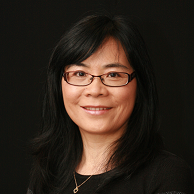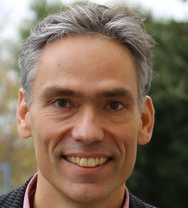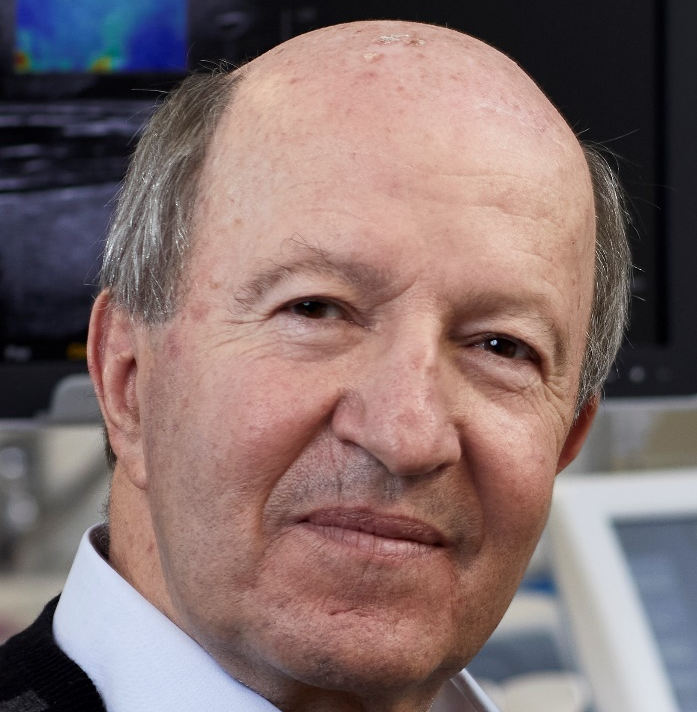
Peiying Zhu
SVP/Fellow, Wireless Research,
Huawei Technologies Canada
Connected Intelligence by 6G: Opportunities and Challenges
Abstract:
Even though 5G is at the early stage of large scale commercialization, many researchers, companies, government organizations, alliances etc.. have been looking beyond 5G and started to envision the next generation of wireless system: definition, use cases, requirements, new services, enabling technologies etc.. Traditionally, ITU-R lead the activities to study technology trend and vision for the next new generation mobile system. It initiated technology trend study in 2020 and vision study in this year. 5G aims to connect everything in addition to connect everyone, we envision that 6G will connect intelligence in addition to connection people and things. We predict that 6G will be the platform for connected intelligence, where the mobile network connects vast amounts of intelligent devices and connects them intelligently. Through artificial intelligence (AI) and machine learning (ML), we will be able to build a real-time connection between the physical and digital worlds, allowing us to capture, retrieve, and access larger amounts of information and knowledge in real time and thus make the connected world a connected intelligence. As society moves towards the Intelligence of Everything, 6G will be the key to proliferating AI, delivering intelligence to every person, home, car, and business. This talk will first present an overall vision of 6G and its opportunities, followed by potential technologies/research directions and associated challenges.
Bio:
Dr. Peiying Zhu, Senior Vice President of Wireless Research, is a Huawei Fellow, IEEE Fellow and Fellow of Canadian Academy of Engineering. She is currently leading 5G beyond and 6G wireless research and standardization in Huawei. The focus of her research is advanced radio access technologies. She led the team to contribute significantly to 5G technologies and standardization. She has been regularly giving talks and panel discussions on 5G/B5G vision and enabling technologies. She is actively involved in 3GPP and IEEE 802 standards development. She served as the guest editor for IEEE Signal processing magazine special issue on the 5G revolution and IEEE JSAC on Deployment Issues and Performance Challenges for 5G. Prior to joining Huawei in 2009, Peiying was a Nortel Fellow and Director of Advanced Wireless Access Technology in the Nortel Wireless Technology Lab. She led the team and pioneered research and prototyping on MIMO-OFDM and Multi-hop relay. Many of these technologies developed by the team have been adopted into LTE standards and 4G products.

Ullrich R Pfeiffer
Institute for High Frequency and Communication Technology (IHCT),
University of Wuppertal, Germany
Achieving real 100Gbps 6G/THz wireless communication with a silicon technology
Abstract:
The terahertz frequency range provides abundant bandwidth (25GHz ~ 50 GHz) to achieve ultra-high-speed wireless communication and enables data rates up to and above 100 Gbps. In this talk, I will present our early work on 6G wireless transceivers and discuss their performance and link impairments. I start with link budget considerations and addresses design trade-offs with respect to the used technology. The radio front-ends are manufactured in a SiGe BiCMOS 0.13um technology and operate at a tunable carrier of 220–260 GHz. The modules achieve data-rates from 20 to 100 Gbps with an EVM from 7% to 17% at a 1-meter distance using 16-QAM. I will further present our work on polarization diversity MIMO systems above 200 GHz. The MIMO link is established using a circular dual-polarization Tx and a dual-polarization Rx module. The polarization-diversity (left-handed circular polarization and right-handed circular polarization) is provided by a lens-coupled circularly polarized on-chip antenna. With this system, two independent data-streams of 55 Gb/s each were transmitted in parallel over a 1-meter line-of-sight distance, achieving an aggregated record data-rate of 110 Gbps.
Bio:
Ullrich Pfeiffer received the Ph.D. in physics from the University of Heidelberg, Germany, in 1999. Till 2006 he was with the IBM T.J. Watson Research Center where his research involved RF circuit design and packaging for 60GHz communication. Since 2008 he holds the High-frequency and Communication Technology chair at the University of Wuppertal, Germany. His current research activities include the design of silicon integrated circuits for THz applications. Prof. Pfeiffer is an IEEE Fellow and an ERC Advanced Grant recipient. Among other awards, he is the recipient of the 2007 European Young Investigator Award, the co-recipient of the 2004 and 2006 Lewis Winner Award, as well as the 2012 and 2018 Jan Van Vessem Award at the ISSCC Conference. In 2017 he received the Microwave Prize. He was an IEEE SSCS Distinguished Lecturer and served as a Scientific Advisory Board Member of the Academy of Finland’s Flagship Program 6Genesis. He is an Associate Editor of the IEEE Transactions on Terahertz Science and Technology, has authored and co-authored 200+ publications, and has been the co-inventor of 10+ US and international issued patents, relating to RF, millimeter-wave, terahertz communication/imaging circuits and sensors.

Mathias Fink
Langevin Institute, ESPCI Paris,
PSL University, France
Wave Control for Wireless Communications: From Time-Reversal Mirrors to Reconfigurable Intelligent Metasurfaces
Abstract:
In this talk, I will show how the work performed at Langevin Institute on wave control have led to the seminal concept behind large reconfigurable intelligent surfaces (RIS) that is currently a topic of great interest in the wireless communication community. Starting with the first demonstrations of ultrasonic “time-reversal mirrors” focusing in complex media in the early nineties, I will underline how these ideas were first used for underwater acoustic communications and were transposed later, for electromagnetic waves, into the concept of massive MIMO to optimize channel diversity. Compared to these techniques that need multiple antenna array, I will explain how we proposed, ten years ago, another approach using tunable metasurfaces to obtain with a limited number of transmitters the best communication performance. The main idea is to replace the numerous transmitting antennas by a smart modification of the wireless environment by physically shaping the propagation medium to achieve optimal focusing and channel diversity. I will show how the optimization of these metasurfaces results from the generalization of the “time reversal mirror” concept to the one of the products of different time-reversal mirrors associated with each transmitters and receivers.
Bio:
Mathias Fink is the George Charpak Professor at the Ecole Superieure de Physique et de Chimie Industrielles de la Ville de Paris (ESPCI Paris) where he founded in 1990 the Laboratory “Ondes et Acoustique” that became in 2009 the Langevin Institute. He is member of the French Academy of Science and of the National Academy of Technologies of France. In 2008, he was elected to the College de France on the Chair of Technological Innovation. He has received several scientific awards such as the CNRS Medal of Innovation, the Helmholtz-Rayleigh Award of the Acoustical Society of America, the Rayleigh Award of the IEEE Ultrasonics Society and the Edwin H. Land Medal of the Optical Society of America. Mathias Fink’s area of research is concerned with the propagation of waves in complex media and the development of numerous instruments based on this basic research. His current research interests include wave control in complex media, time-reversal in physics, metamaterials, telecommunications, super-resolution, medical ultrasonic imaging, multiwave imaging. 6 start-up companies with more than 400 employees have been created from his research (Echosens, Sensitive Object, Supersonic Imagine, Time Reversal Communications, CardiaWave and Greenerwave).

